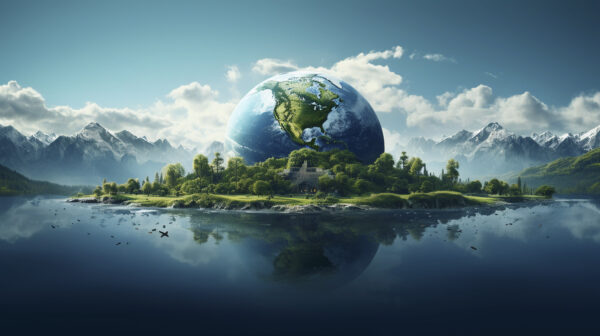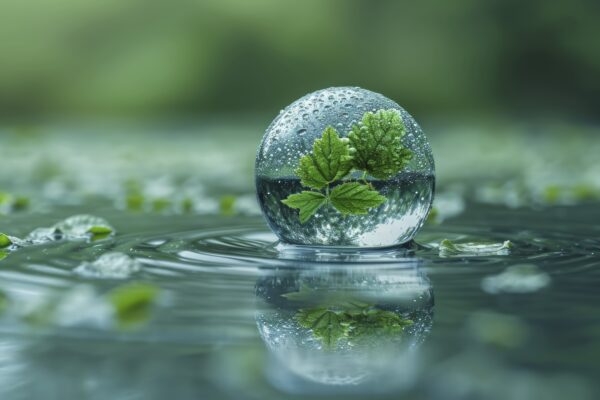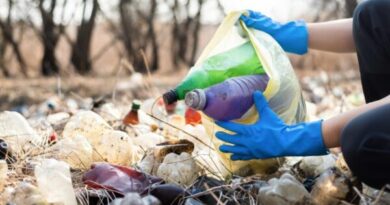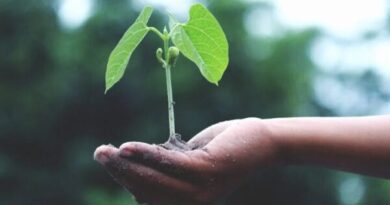Safeguarding Our Future: A Comprehensive Guide to Water Conservation
Safeguarding Our Future: A Comprehensive Guide to Water Conservation:
Water, often dubbed the “blue gold,” is the lifeblood of our planet. It nurtures ecosystems, sustains agriculture, fuels industries, and meets our everyday needs. Despite covering 71% of Earth’s surface, only a fraction of the planet’s water is fresh and accessible. As population growth and climate change place increasing pressure on this precious resource, water conservation emerges as a crucial practice for ensuring a sustainable future. In this extensive guide, we explore the profound importance of water conservation and provide detailed, actionable strategies for individuals and communities to make a meaningful impact.
The Critical Importance of Water Conservation:
Environmental Sustainability: Freshwater ecosystems, such as rivers, lakes, and wetlands, are biodiversity hotspots that support countless species of plants, animals, and microorganisms. Excessive water extraction can lead to the degradation of these habitats, threatening biodiversity and disrupting ecological balance. Conserving water helps protect these vital ecosystems and maintains the natural processes essential for life.
Agricultural Productivity and Food Security: Agriculture is the largest consumer of freshwater, accounting for about 70% of global water withdrawals. Efficient water management in agriculture is essential to ensure food security, particularly as the global population is projected to reach nearly 10 billion by 2050. Implementing water-saving techniques in farming not only conserves water but also enhances crop yields and reduces the vulnerability of food systems to climate variability.
Energy Conservation: The water-energy nexus highlights the interdependence between water and energy. Significant amounts of energy are required to pump, treat, and transport water. By conserving water, we can reduce the energy required for these processes, thereby lowering greenhouse gas emissions and mitigating climate change. For instance, in the United States, approximately 13% of the nation’s electricity consumption is associated with water-related activities.
Climate Change Resilience: Climate change is altering precipitation patterns, intensifying droughts, and increasing the frequency of extreme weather events, all of which impact water availability. Water conservation helps build resilience to these changes by reducing the demand on water resources and ensuring a more reliable supply for future generations. Additionally, conservation efforts can help mitigate the impacts of flooding and erosion by promoting better water management practices.
Economic Benefits: Water conservation can lead to substantial economic savings for households, businesses, and governments. Reduced water usage lowers utility bills, decreases the need for expensive infrastructure projects, and minimizes the costs associated with water treatment and wastewater management. Furthermore, industries that adopt water-efficient practices can enhance their competitiveness by reducing operational costs and demonstrating environmental responsibility.
Practical Strategies for Water Conservation:
In the Home:
Detect and Repair Leaks: A small drip from a leaky faucet or a running toilet can waste thousands of gallons of water annually. Regularly inspect your plumbing system for leaks and fix them promptly. Simple repairs, such as replacing worn washers or installing new flapper valves, can make a significant difference in reducing water waste.
Install Water-Efficient Fixtures: Modern water-efficient fixtures, such as low-flow showerheads, faucets, and dual-flush toilets, can significantly reduce water usage without compromising performance. These fixtures use advanced technologies to maintain pressure while using less water, resulting in substantial water and energy savings.
Optimize Appliance Use: Dishwashers and washing machines are major household water consumers. To maximize efficiency, only run these appliances with full loads and opt for energy-efficient models labeled with the ENERGY STAR certification. Additionally, consider using cold water settings for laundry to save energy and extend the life of your clothes.
Adopt Water-Saving Habits: Simple changes in daily routines can lead to considerable water savings. For instance, take shorter showers, turn off the tap while brushing your teeth, and use a broom instead of a hose to clean driveways and sidewalks. Implementing these habits can make a noticeable impact on your household’s water consumption.
Harvest Rainwater: Collecting rainwater for outdoor use is an effective way to reduce reliance on municipal water supplies. Install rain barrels or cisterns to capture and store rainwater, which can then be used for watering plants, washing cars, or even flushing toilets. This practice not only conserves water but also helps manage stormwater runoff and reduce erosion.
Upgrade to Smart Irrigation Systems: Smart irrigation systems use weather data and soil moisture sensors to optimize watering schedules, ensuring that plants receive the right amount of water at the right time. These systems can significantly reduce water usage in landscaping by preventing overwatering and adjusting irrigation based on real-time conditions.

In the Garden:
Select Native and Drought-Resistant Plants: Native plants are adapted to the local climate and soil conditions, requiring less water and maintenance compared to non-native species. Incorporate drought-resistant plants into your garden to create a resilient landscape that thrives with minimal irrigation. Consult with local nurseries or extension services to identify suitable plant species for your region.
Implement Mulching Practices: Mulching involves covering the soil with organic or inorganic materials, such as wood chips, straw, or gravel. Mulch helps retain soil moisture, suppress weeds, and regulate soil temperature. By reducing evaporation and improving soil health, mulching can significantly enhance water efficiency in gardens and landscapes.
Practice Efficient Watering Techniques: Water your garden during the early morning or late evening when temperatures are cooler and evaporation rates are lower. Use drip irrigation or soaker hoses to deliver water directly to the plant roots, minimizing runoff and ensuring efficient water use. Avoid watering during windy conditions, which can cause water to evaporate before it reaches the soil.
Adopt Xeriscaping: Xeriscaping is a landscaping approach that focuses on designing gardens with low-water-use plants and efficient irrigation methods. This technique emphasizes the use of native and drought-tolerant plants, as well as the strategic placement of rocks, gravel, and mulch to reduce water needs. Xeriscaping can reduce outdoor water use by up to 75% and create attractive, sustainable landscapes.
Create Rain Gardens: Rain gardens are designed to capture and infiltrate rainwater, reducing runoff and promoting groundwater recharge. These gardens are typically planted with native vegetation that can tolerate both wet and dry conditions. By directing rainwater from roofs, driveways, and other impervious surfaces into rain gardens, you can enhance water conservation and improve water quality.
In the Community:
Promote Water-Saving Policies and Practices: Advocate for local and national policies that support water conservation, such as regulations on water usage, incentives for water-efficient technologies, and investments in sustainable water infrastructure. Engage with policymakers, community leaders, and organizations to promote the adoption of water-saving practices and policies.
Educate and Raise Awareness: Organize educational campaigns, workshops, and community events to raise awareness about the importance of water conservation. Distribute informational materials, create social media campaigns, and collaborate with schools and local organizations to spread the message. By educating others, you can inspire collective action and foster a culture of water stewardship.
Participate in Community Clean-Up Efforts: Join local clean-up events to protect rivers, lakes, and other water bodies from pollution. Removing litter, debris, and contaminants from waterways helps maintain water quality and supports healthy ecosystems. Encourage community members to get involved and take pride in preserving their local environment.
Support Sustainable Businesses: Choose products and services from companies that prioritize water conservation in their operations. Support businesses that use water-efficient manufacturing processes, reduce water waste, and promote sustainable practices. Your consumer choices can influence industry standards and encourage more companies to adopt environmentally responsible practices.
Implement Water-Sensitive Urban Design: Advocate for water-sensitive urban design (WSUD) principles in community planning and development. WSUD integrates water management into urban design, incorporating features such as green roofs, permeable pavements, and bioswales to manage stormwater, reduce runoff, and enhance water conservation. By supporting WSUD, you can help create resilient, water-efficient communities.
Conclusion:
Water conservation is a shared responsibility that demands collective action at every level. By adopting water-saving practices in our homes, gardens, and communities, we can protect this invaluable resource for future generations. Each effort, no matter how small, contributes to a more sustainable and water-secure world. Let us embrace the challenge and take meaningful steps to conserve water, ensuring that this precious resource continues to sustain life on our planet.
FAQs:
Why is water conservation important even in areas with plenty of water?
Answer: Conserving water is essential because it protects local ecosystems, saves energy, prepares for climate change impacts, and provides economic benefits by lowering utility bills and delaying infrastructure costs.
What are some easy ways to save water at home?
Answer: You can save water by fixing leaks, installing low-flow fixtures, running full loads in dishwashers and washing machines, taking shorter showers, and turning off the tap while brushing your teeth or washing dishes.
How can I make my garden more water-efficient?
Answer: Make your garden water-efficient by planting native and drought-resistant species, using mulch, watering early or late in the day, utilizing drip irrigation, and harvesting rainwater.
How can communities encourage water conservation?
Answer: Communities can promote water conservation through educational campaigns, supporting water-saving policies, organizing clean-up events, encouraging sustainable business practices, and incorporating water-sensitive urban design.
How does water conservation help mitigate climate change?
Answer: Water conservation reduces energy use, lowers greenhouse gas emissions, enhances climate resilience, and promotes sustainable practices, all of which contribute to mitigating climate change.




